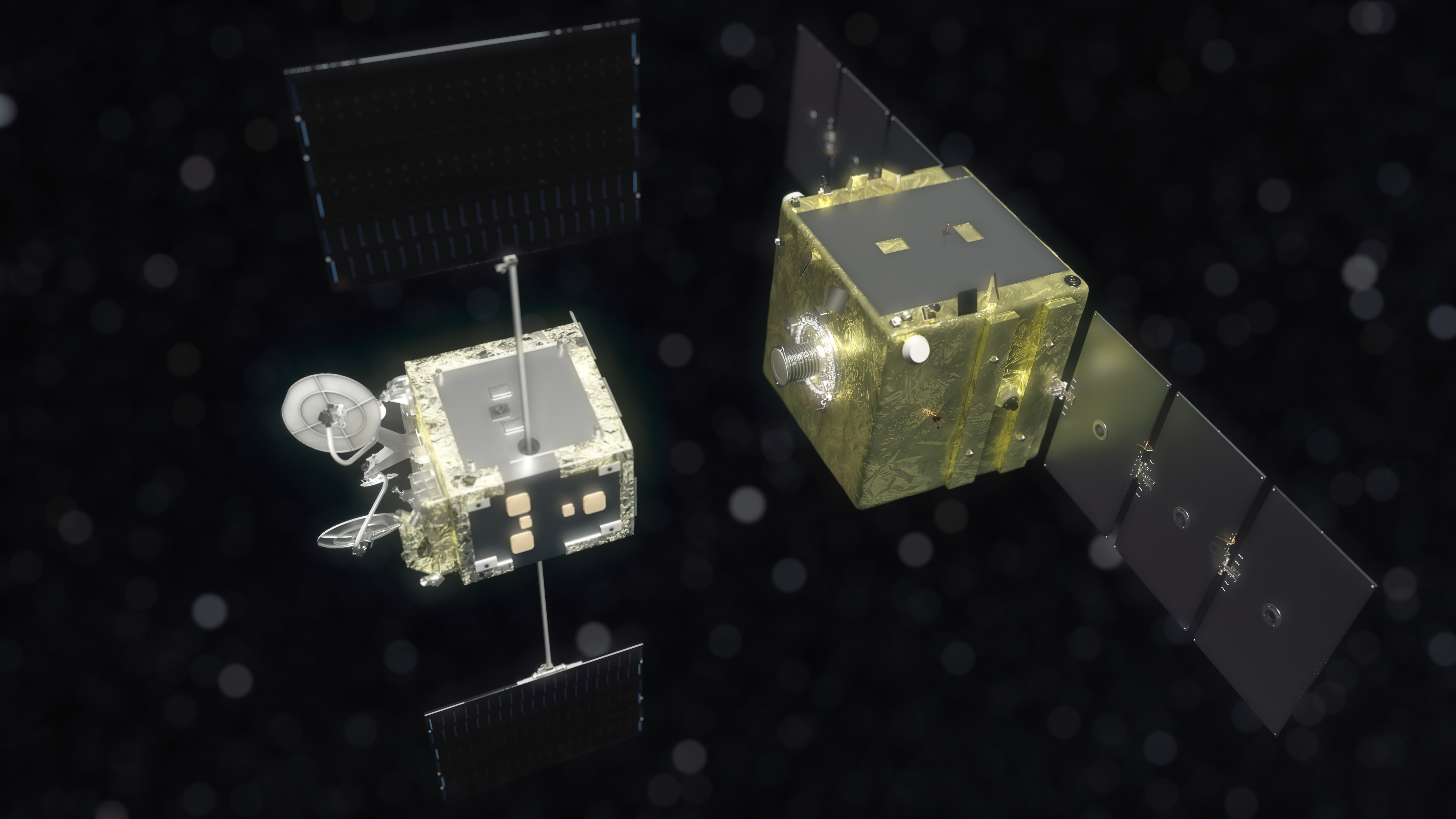
Space sustainability company Astroscale has secured funding for an in-space demonstration of its commercial space debris removal technology that aims to deorbit dead or failed satellites.
The ELSA-M (for End-of-Life by Astroscale-Multiple) demonstration mission is slated for launch in 2026, and one year later will attempt to remove a OneWeb telecommunication satellite from its orbit at a 745-mile (1,200 kilometers) altitude.
The mission received 13.95 million euro ($15 million) through a contract with satellite Internet services provider Eutelsat OneWeb, funded by the European Space Agency and the U.K. Space Agency.
Nick Shave, managing director of Astroscale UK, told Space.com that the company hopes to launch a commercial satellite removal service shortly thereafter.
Related: Wow! Private space-junk probe snaps historic photo of discarded rocket in orbit
"This mission is a demonstrator of a service that we plan to introduce on the back of this mission, which will be able to remove multiple spacecraft," Shave said. "The spacecraft will weigh about 600 kilograms [1,300 lb] and carry enough fuel to perform three or four deorbits, depending on the size of the target spacecraft, their orbital plane and other variables."
The ELSA-M mission will be launched into low Earth orbit and perform extensive technical checkouts before raising itself using its thrusters to the OneWeb altitude. After docking with the selected satellite, it will drag its cargo down to about 220 miles (350 kilometers) where it will leave the satellite to naturally deorbit.
"After we drop it off, it will take about three years for the OneWeb satellite to deorbit and burn up in the atmosphere," said Shave.
The ELSA-M satellite uses a magnet to attach to a docking plate that must be mounted on the target spacecraft before launch. The company is in talks with satellite manufacturers all over the world, encouraging them to make their spacecraft compatible with the junk collector to help minimize orbital clutter in the future.
"We need satellite operators to act in a sustainable way, think forward and put docking plates or docking mechanisms on the spacecraft that services like the Astroscale can safely dock with," said Shave. "It's a lot safer and easier than trying to capture something that isn't prepared for docking with a robotic arm. You're not exactly sure if it's robust enough and there is more risk there."
The ELSA-M service will aim to remove the estimated 2 to 5% of satellites that fail before propelling themselves to lower altitudes from where they can safely deorbit. Operators of satellites in low Earth orbit (an altitude below 1,600 miles, or 2,000 km) registered in the U.S. are obliged to remove their spacecraft from orbit within 5 years of mission end, using residual fuel to navigate into Earth's atmosphere where they burn up.
With the expected size of megaconstellations such as OneWeb, Starlink or Amazon Kuiper and the forecasted rise in the number of small satellites in low Earth orbit, even a small percentage of failed deorbits could lead to a lot of clutter.
Astroscale has also developed the ADRAS-J mission that is currently inspecting a used Japanese rocket stage left in low Earth orbit in 2009, aiming to remove that object with a future spacecraft. The company has also developed a concept mission called COSMIC that will attempt to remove two old British satellites from orbit using a robotic arm, if selected by the U.K. Space Agency.
The ELSA-M demonstration spacecraft, in cooperation with OneWeb, is currently being assembled in Astroscale's cleanrooms in Harwell, England. The company has not partnered with any commercial customers yet, said Shave, who estimates that the space debris removal market could be worth several billion dollars within the next ten years.
Astroscale previously demonstrated its in-orbit rendezvous and capture technologies with its 2021 ELSA-d (End-of-Life Services by Astroscale demonstration) mission. The mission used a simulated piece of space junk, which it brought to space with it, to test the magnetic capture and autonomous docking system needed for commercial space debris removal operations.







